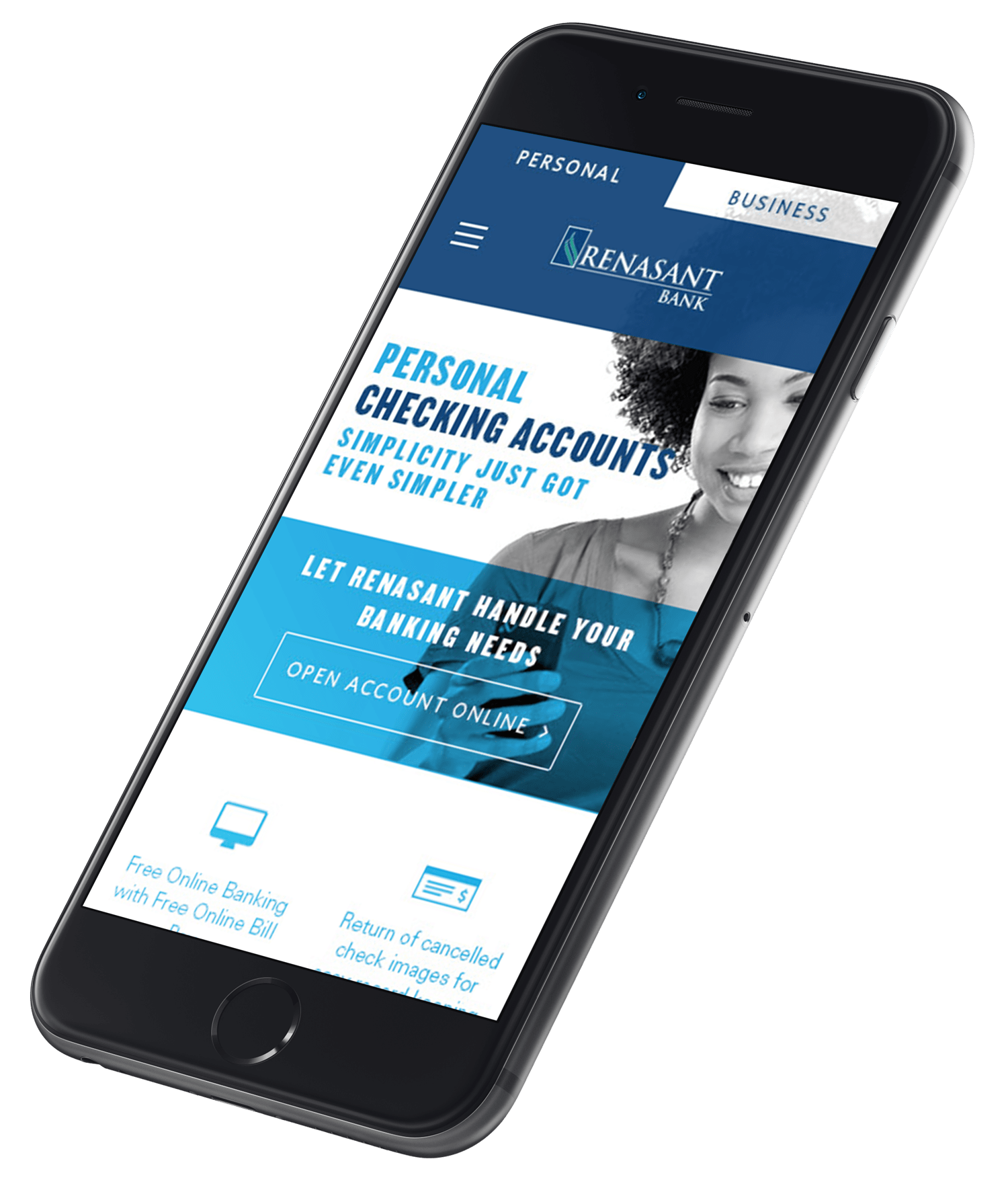10 Banks, 10 Accounts is a 10-part series in which we sent one of our copywriters Riley on a mission to open a checking account at 10 different banks to find out how they make their customers feel, learn what they’re doing well and see what they’re doing poorly.
We’ve kept the banks anonymous to protect the integrity of the project—hopefully, you’ll see your institution in some of them. Hover or click on the bank names to learn more about them as you read. If this is your first time reading, start here to learn more about Riley and this project—10 Banks, 10 Accounts.

Well, it’s been a wild ride, folks. We’ve come to the last installment of our 10 Banks 10 Accounts project, and I’m sad to see it go. After the Full Report for this topic, I’ll wrap up my takeaways and observations from the entire series. Believe me, I’ve learned quite a lot.
For now, it seems fitting that this last topic is about keeping in touch—about the mail, messages, and phone calls I received from our 10 banks.
Did you ever have a pen pal in grade school? Maybe you wrote a few times through the school year, but the letters dwindled as the term came to an end, as mine did.
One of my friends never stopped writing his pen pal. They kept in touch through high school, sending small gifts and pictures over the holidays. By college, Facebook was a thing, but they continued to write letters. They’re still pen pals today, sharing their experiences of being spouses and new parents across vast distances.
It’s crazy to think about, but really, their rewarding, almost lifelong relationship was maintained by 1) listening and 2) consistency.
So it goes when it comes to corresponding with your clients. Some of our banks did better than others, but I gotta say, only one of them made a good pen pal. Out of 10 banks, it only felt like one was really listening and looking out for me.
The numbers
Since opening these 10 accounts almost a year ago, I’ve received between 30 and 40 pieces of snail mail and more than 300 emails from our banks. I’ll describe the physical mail more in The Full Report, but for now, here’s how the emails broke down:
- Neobank emailed me the most (90), followed by Regional Hotshot (78), Super Regional (42), and Top 10 Megabank (32).
- Regional Creeper sent me 22 emails, while Footprint Protector and The Little One sent 16 and 13, respectively.
- Two banks, Bank Absorber and Tweener, never emailed me at all.
The dictionary defines junk mail as “untargeted mail advertising goods or services” and “unsolicited advertisements and flyers that are sent indiscriminately.”
Purpose and targeting are what separate valuable pieces of mail from invaluable ones. If your email strategy is “spray and pray,” your messages will land in the rubbish bin. Any mail you send should answer its recipient’s most obvious question: Why am I getting this?
Remember, at each bank, I opened nearly the same basic checking account. It’s interesting how each of the banks that contacted me most focused on something different in their correspondence. It seems the strategy behind their emails amounts to pushing certain products or flexing their bank’s particular area of strength, rather than what might help me or what I might actually need.
About 10% of Neobank’s emails focused on its investment division, though I’d never indicated an interest in investing. Remember, I only deposited a hundred dollars in my Neobank account.
Top 10 Megabank spent half its emails on promoting the bank’s app and its voice assistant. However, Top 10 Megabank only sent me one “schedule an appointment” email and one savings upsell email. Kind of a one-sided approach, don’t you think?
Regional Hotshot and Super Regional did a better job of hitting the sweet spot. Regional Hotshot sent me 10 upsells, all for products I’d reasonably need, and 10 emails promoting their referral and credit card rewards programs. Regional Hotshot also sent six emails promoting financial education resources. Super Regional used about a quarter of its emails (16) to promote FinEd resources and split its upsell emails three-three between mortgage and savings.
I’ll delve into this more in The Full Report, which will post in two weeks.
What makes a good letter?
Of the lot, I found Top 10 Megabank and Super Regional emails to be the most captivating to me. They looked nice and were easy to read. As soon as I opened an email from Top 10 Megabank or Super Regional, I knew what its focus was, and the details were easy to understand. By contrast, Regional Hotshot’s emails—though relevant—were dry and templated-looking.
Top 10 Megabank’s voice assistant emails, for instance, didn’t just inform me about the tool, they told me everything I could use it for and how to use it. This is something to keep in mind for any product—don’t just talk about what something is, but teach clients how it works and how it fits into their overall financial toolkit.
Super Regional Bank’s emails did a great job of incorporating its FinEd curriculum. Each FinEd email featured about half a dozen enticing articles. These articles weren’t randomly generated—each related to the overall theme of the email. For instance, one email I recently received focused on establishing a financial routine, a perfect topic for the new year. One article talked about how to track spending, another linked to a retirement calculator, and another offered money tips from regular working folks.
Offering incentives is another good way to draw customers in. An email about mortgages is much more enticing and feels timelier if it includes a promo for $500 off closing costs, while an email highlighting the opportunity to apply for a credit card will be much more successful if it offers a lower introductory interest or a few hundred free rewards points. Both Super Regional Bank and Regional Hotshot used incentives well in their emails.
The toolkit
In this series, I’ve frequently referred to a collection of bank products as a “financial toolkit,” not just because it’s catchy, but because it’s true.
There are a few basic tools that most people need—like a hammer, a screwdriver, and a wrench. Similarly, most people need a checking account and a savings account. From this “starter kit,” you can build, evolve, and expand each client’s array of tools in a logical way.
Sure, more financial tools mean increased versatility and flexibility in handling whatever obstacles come up. But you wouldn’t give a soldering iron to someone who doesn’t even have a hammer, would you?
- If I only have a checking account with a $100 balance, what tool do I need next?
- If I’m already enrolled in online banking, why send me an email prompting me to enroll in online banking?
- If I’m losing $7 a month because I haven’t enrolled in direct deposit, is an investment promotion right for me?
It’s also important to consider the road map to financial health and landmarks along this route, like paying down consumer debt, saving to create an emergency fund, and ceasing to live paycheck to paycheck. How do your products help clients achieve those landmarks? Where is each specific client on the path? For your institution, what does the model of a financially healthy person look like?
Although I didn’t receive any mail or email that felt like it was part of a more coordinated plan toward a goal or general financial wellness, Super Regional Bank and Regional Hotshot came closest to hitting the mark.
My pen pal
Email isn’t everything. “Correspondence” is a broad term that includes a number of mediums that ideally play off each other. Good emails alone can’t do the job of establishing and nurturing a relationship.
My experience with Regional Hotshot has been the definition of relationship banking.
During the onboarding process, my consultant, “Camilla,” really got to know me. She asked about my finances, what was going on in my life, and about my goals and obstacles. She asked me what I liked and disliked about my current bank. She told me about Regional Hotshot’s areas of financial health and advised me to consider opening a savings account.
No other bank did as much to get to know me.
At the conclusion of the onboarding process, Camilla asked when she could check in to make sure I’d gotten my debit card and that my account was working correctly. As promised, she called me up a few weeks later.
“And have you thought about that savings account? It’ll be good for your future,” she reminded me.
Camilla called again a few weeks later, because she noticed I’d been paying a monthly maintenance fee on my account.
“You could avoid the fee by signing up for direct deposit, or I could change you over to another account with no fees,” she said.
I asked her to switch me to the other account, and within 10 days, I had the papers for my new account in my mailbox. Camilla had handwritten my address on the front, and it amazes even me how strong an impression can be made by such a small thing like that.
Maybe this sounds a bit like mothering to you, but it’s not—it’s looking out for your client. Camilla established a rapport with me right off the bat, so when she made recommendations, I knew she was acting in good faith. She made an impression on me as a person who cares about her customers and who has the knowledge and experience to help them.
I didn’t get calls from any of the other banks, even though I was losing out on fees at plenty of them. And maybe that’s their plan. Maybe it’s your organization’s plan, too.
But hear this: if you’re of the opinion that the dynamic between bank and client is more transactional than consultative, that it’s not your job to teach or lead your clients, that’s fine, I guess. But don’t call yourself a relationship institution.
Where to go from here
When it comes to targeting your audience, Mabus Agency can help with that. Last year, we helped Renasant Bank achieve its largest year-to-year savings deposit increase in history, thanks to a targeted email campaign driven by simple data and common sense.
Forging a relationship with a new client looks different for every bank, but it’s up to you to tell the client about yourself, and it’s up to you to get to know your client. This isn’t feel-good hippie stuff—it’s reports of first-hand interactions and data-driven research that will help you gather more deposits and retain customer loyalty. Guess what? We can help you figure that out, too.
I hope that through this journey I’ve helped you rethink your internal processes and resources, and how to refine and utilize what you already possess to better serve yourselves and your client.
And stay tuned. After releasing The Full Report on correspondence, I’ll conclude this series with a few final thoughts. Plus, there’s a bonus post on the way—over the next few weeks, I’m going to close all 10 of these accounts. I’ll report back on what each bank does (or doesn’t do) to retain my business.




